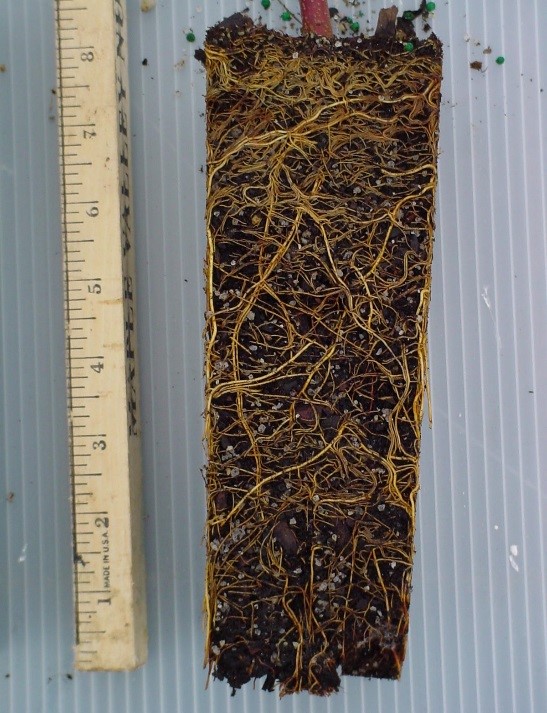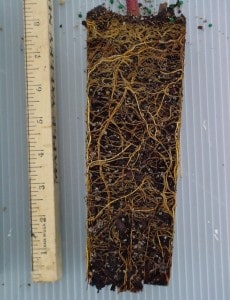 Plant roots are our focus at Octoraro Native Plant Nursery because we understand this simple but critical premise: healthy roots help determine whether your planting will be a success or failure. Many factors contribute to the success of a planting project. The quality of the plants are the obvious first part of the equation. But just looking at the structure, the leaves or fullness of the plant, can sometimes be a false indicator of plant health…it’s important but not the critical component.
Plant roots are our focus at Octoraro Native Plant Nursery because we understand this simple but critical premise: healthy roots help determine whether your planting will be a success or failure. Many factors contribute to the success of a planting project. The quality of the plants are the obvious first part of the equation. But just looking at the structure, the leaves or fullness of the plant, can sometimes be a false indicator of plant health…it’s important but not the critical component.
Air Pruning Roots
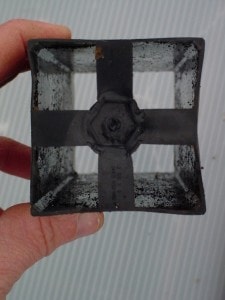 Octoraro utilizes several tools to aid us in growing plants with healthy roots and all are controllable in our nursery cultural practices. The first and best tool is the use of air-root-pruning pots. Almost all our plants begin in such containers. The premise is simple; as the primary roots reach the bottom of the pot, contact with the air stops the root growth but encourages secondary and tertiary root growth. The result is a more fibrous well- rooted plant. We also use two “below-ground” growing systems in “Cellu-grow” and “pot-in-pot” systems. Both these growing systems help protect plants that have vulnerable roots to extreme cold and heat.
Octoraro utilizes several tools to aid us in growing plants with healthy roots and all are controllable in our nursery cultural practices. The first and best tool is the use of air-root-pruning pots. Almost all our plants begin in such containers. The premise is simple; as the primary roots reach the bottom of the pot, contact with the air stops the root growth but encourages secondary and tertiary root growth. The result is a more fibrous well- rooted plant. We also use two “below-ground” growing systems in “Cellu-grow” and “pot-in-pot” systems. Both these growing systems help protect plants that have vulnerable roots to extreme cold and heat.
Irrigation Affects Health of Roots
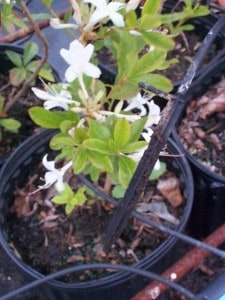 Watering our plants during the growing season also affects root quality. Trust us when we say it’s far easier to kill a plant from over watering vs. under watering. Too much water can lead to root diseases like phytophthora. We use drip irrigation technology that allows is to deliver literally drops of water directly to the roots. By grouping plant species that have similar water requirements we can regulate the amount of water to meet the plants needs without exceeding them.
Watering our plants during the growing season also affects root quality. Trust us when we say it’s far easier to kill a plant from over watering vs. under watering. Too much water can lead to root diseases like phytophthora. We use drip irrigation technology that allows is to deliver literally drops of water directly to the roots. By grouping plant species that have similar water requirements we can regulate the amount of water to meet the plants needs without exceeding them.
The biggest issue with growing in containers is the concern about root circling. This is especially the case with trees where severely circled roots, if not addressed, can eventually girdle and kill a tree over time. While this is a justifiable concern, there are several ways to address this problem both in the nursery and at the time of planting. At Octoraro, we need to do three things: 1- Put the right plant in the right container based on growth habit, 2 – sell the plants when they are properly rooted and/or 3 – “bump up” plants into larger containers before they get root bound.
Hand Pruning Roots
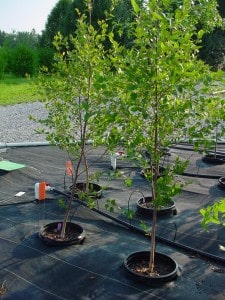 Both in the nursery and at the time of planting, root pruning is another important tool. Whenever we bump up plants from one container into a larger container we make sure we “release” the roots by breaking up the root mass AND we also do light root pruning of the root tips. This is actually good for the plant and encourages new root growth. This is a practice that is often skipped at the time of planting but with a good, clean, sharp pair of pruners should be implemented in the field.
Both in the nursery and at the time of planting, root pruning is another important tool. Whenever we bump up plants from one container into a larger container we make sure we “release” the roots by breaking up the root mass AND we also do light root pruning of the root tips. This is actually good for the plant and encourages new root growth. This is a practice that is often skipped at the time of planting but with a good, clean, sharp pair of pruners should be implemented in the field.
Keep in mind not all plant roots are the same. There are broad spreaders, tap rooting species and ones in between. When you inspect your plants roots, oaks will be a lot different than say river birch and other fast growing species. So there must be allowance for these differences, but the key point of observing healthy roots overall doesn’t change. Look for white or yellowish root color (although there are some species that just naturally have darker colored roots). Roots that are dark brown to black, fall off the root ball or have a bad smell are signs of problems.
Roots Matter At Octoraro
So with all the other potential challenges to a successful restoration planting (i.e. drought, flood, invasive plants, wildlife predation, poor planting practices, little or no maintenance), make sure you start out with a grower that pays attention to root development and is not shy about showing it to you. That’s why we schedule tours of the nursery for anyone wishing to see our operations. For us “it’s all about the roots!”

